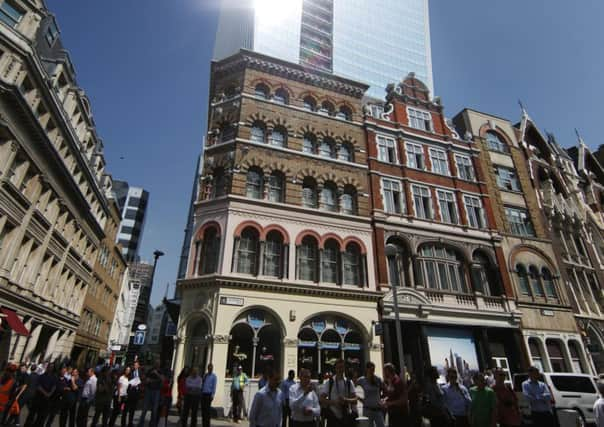Scots engineer designs hi-tech tool to reduce sun's glare


It allows the user to gauge the risk of glint and glare from solar farms or highly reflective buildings, which can have potentially serious implications for the likes of drivers and pilots.
Although solar panels are designed to absorb as much light as possible and not to reflect it, glint and glare can be produced as a direct reflection of the sun.
Advertisement
Hide AdAdvertisement
Hide AdBoth can interfere with road, rail and air transport, as well as impacting on nearby homes and businesses.
Incidents like the melting of cars in a London street, caused when the sun’s rays were deflected by the glass-clad “Walkie-Talkie” skyscraper, could also be avoided by using the technology.
Civil engineer Michael McGhee, director of the Glasgow-headquartered consultancy firm Neo Environmental, designed the ground-breaking computer model, which charts the precise location of the sun at any time in any place around the world.
He said: “Once you’ve got the direction of reflection you can compare it to where local receptors are – like roads, airports and houses – to gauge the magnitude of impact, or if there’s going to be an impact at all.
“The model will work for anywhere in the world – you would put in the longitude and latitude of your solar farm and the model will predict the sun’s location in relation to it.”
The technology was designed for use in the planning stages of large-scale solar farms, though it has many potential applications.
McGhee said: “This could be anything from planting a hedge or some trees to screen a house to changing the angle of panels or rearranging arrays.”
The tool has an important safety function, but McGhee has also dreamed up some less serious uses. “It could be developed into an app for mobile phones. You could use it to do things like find out which bars with beer gardens should be basking in sunshine or in the shade at any particular time of the day.
Advertisement
Hide AdAdvertisement
Hide Ad“For anything where you’re looking at the impact of the sun or its reflections – photographers could use it to predict the lighting at viewpoints.
Scotland has 248 megawatts of installed solar power capacity, with other schemes awaiting construction. Development has stalled as a result of recent UK government cuts in support for the technology.